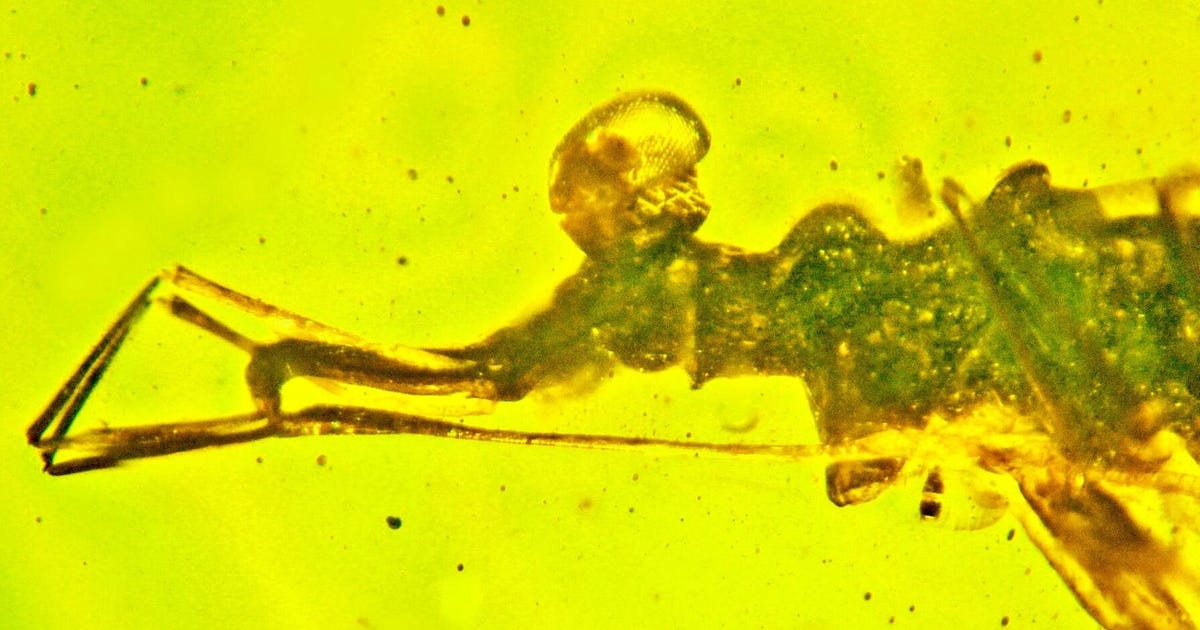Scientists Discover Bizarre Bulging-Eye Bug Trapped in 100-Million-Year-Old Amber
Bulging eyes. Elongated mouth. Sticky feet that oozed resin. A newly discovered bug found trapped in 100-million-year-old Burmese amber is so unusual that it needed its own family. Unfortunately, it’s extinct, so it’s the only one of its kind, but the amber preserved exquisite details of its body.
Amber expert George Poinar Jr., a professor emeritus with Oregon State University, is the lead author of a paper describing the bug published in the journal BioOne Complete last month. “It is a small predator that used its protruding eyes to locate insect prey,” said Poinar in an OSU statement this week.
P. exophthalma’s oddball eyeball gave it 360 vision.
George Poinar Jr./OSU
Amber is a remarkable preservative. It starts off as a sticky tree resin that ensnares plants and animals before fossilizing over time.
The bug is now named Palaeotanyrhina exophthalma. It’s a “true bug” belonging to the Hemiptera order of insects that includes familiar modern-day critters like cicadas, aphids and assassin bugs. But P. exophthalma didn’t fit with any existing families of these bugs, so it needed its own: Palaeotanyrhinidae. That name comes from a combination of Greek words that emphasize the specimen’s age, long body size and extended head shape.
The dainty bug is about 0.2 inches (5 millimeters) long. The protruding eyes are particularly notable. “Its eyes provided a clear, 360-degree view of its habitat so it could see prey that might appear from any side,” said Poinar. It also has a sheath on some of its legs filled with a “resinous substance” that would have helped it hang onto prey.
P. exophthalma is one more example of the ancient marvels that’ve been preserved in amber. Check out our gallery for more treasures, from flowers to an insect that looks like E.T.
For all the latest world News Click Here

